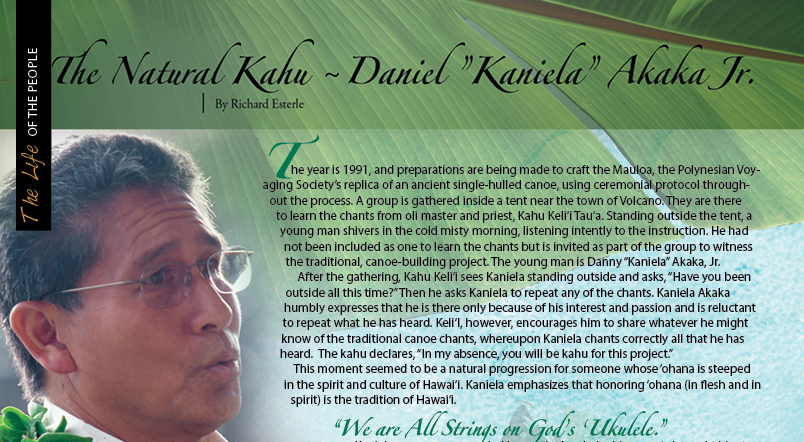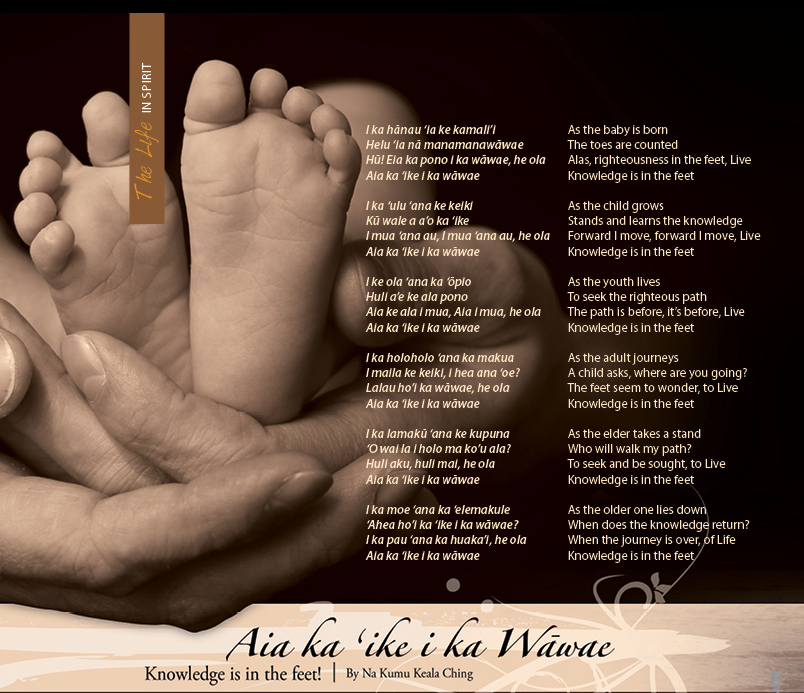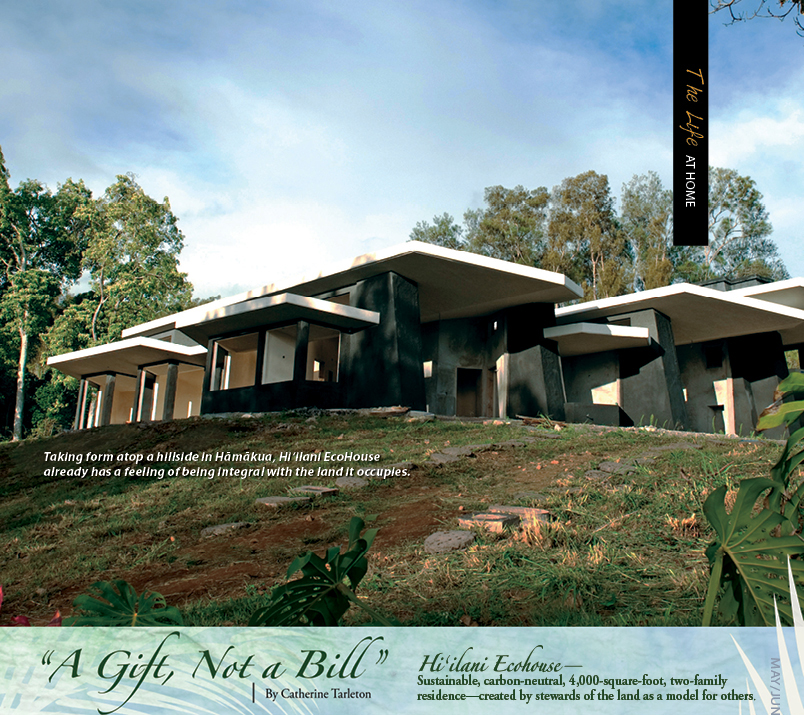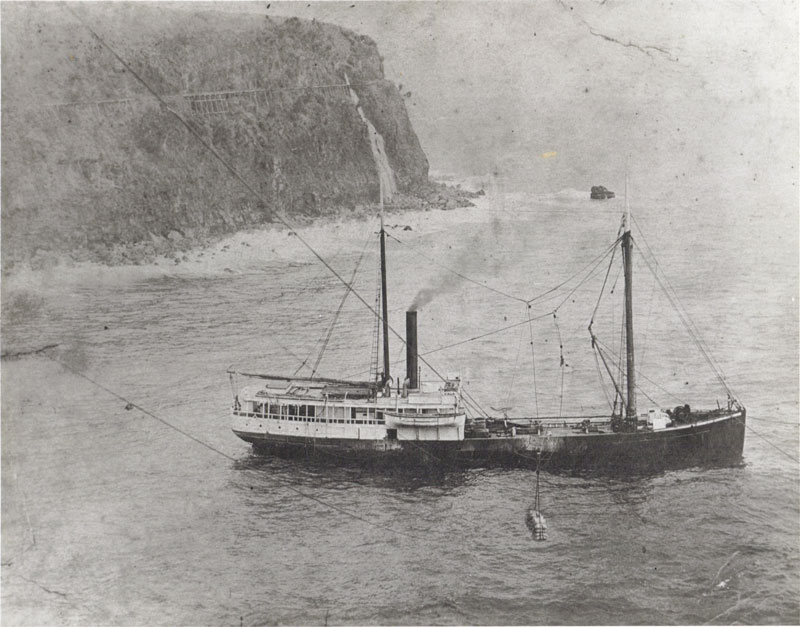
The Natural Kahu – Daniel “Kaniela” Akaka, Jr.

By Richard M. Esterle
The year is 1991, and preparations are being made to craft the Mauloa, the Polynesian Voyaging Society’s replica of an ancient single‐hulled canoe, using ceremonial protocol throughout the process. A group is gathered inside a tent near the town of Volcano. They are there to learn the chants from oli master and priest, Kahu Keli‘i Tau‘a. Standing outside the tent, a young man shivers in the cold misty morning, listening intently to the instruction. He had not been included as one to learn the chants but is invited as part of the group to witness the traditional, canoe-building project. The young man is Danny “Kaniela” Akaka, Jr.
After the gathering, Kahu Keli‘i sees Kaniela standing outside and asks, “Have you been outside all this time?” Then he asks Kaniela to repeat any of the chants. Kaniela Akaka humbly expresses that he is there only because of his interest and passion and is reluctant to repeat what he has heard. Keli‘I, however, encourages him to share whatever he might know of the traditional canoe chants, whereupon Kaniela chants correctly all that he has heard. The kahu declares, “In my absence, you will be kahu for this project.”
This moment seemed to be a natural progression for someone whose ‘ohana is steeped in the spirit and culture of Hawai‘i. Kaniela emphasizes that honoring ‘ohana (in flesh and in spirit) is the tradition of Hawai‘i.
“We are All Strings on God’s ‘Ukulele.”
Kaniela grew up surrounded by music. As a baby his parents brought him to Kawaiaha‘o Church in Honolulu, where his uncle Abraham was pastor and his father, Sen. Daniel Akaka, was choirmaster. The church was known as the “Westminster Abbey of the Pacific,” and to quote the 2000 edition of Living Treasures of Hawai‘i, “The Rev. Abraham Akaka was the most widely known Hawaiian since Kamehameha the Great. He often stated, ‘We are all strings on God’s ‘ukulele,’ at which point he would strum his ‘ukulele to demonstrate how the strings, working together, can
create harmony.”
Kaniela’s father, in addition to being the choirmaster at Kawaiaha‘o Church for 17 years, taught band for several years at a Honolulu high school before he became a U.S. Senator. There were many instruments around the house, including his dad’s vintage Martin guitar. The family was deep in good singers as well. Following in his father’s footsteps, Kaniela became a leader in the youth choir, singing as a tenor. Family life centered on the church and its large congregation.
Kaniela had an interest in absorbing everything he could about Hawai‘i from the kupuna. The stories fascinated him. He learned Hawaiian language and culture this way and benefitted from the rich melodies permeating the church during and after services.
At nine, he began playing his father’s guitar and shortly afterwards started his study with Auntie Ellen Jane Hale, who showed him wahine-style slack key guitar. From Auntie Ellen Jane’s son, Earl (Bozo) Hale, he learned bossa nova with the song, “The Girl from Ipanema,” in regular guitar tuning.
Throughout Kaniela’s childhood and into his adulthood he continued to learn from a multitude of great musicians, a list of which would read like a who’s who of contemporary Hawaiian music. He played with family, friends and several bands. Later, he would record two solo songs for a CD produced by Charles Brotman.
Kaniela never stopped in his quest for learning, and his musical background set the stage for becoming a serious student of oli (chant). Being asked by the man inside the sacred tent, Kahu Keli‘i Tau‘a, to learn and transmit the Hawaiian chants and ceremonies—for the Mauloa project and beyond—was an honor. As assistant kahu, Kaniela would become a keeper of the arts, namely the chants and ceremony for the Mauloa project and beyond. He was fluent in the Hawaiian language and therefore blessed to understand the meaning of the chants. He picked them up quickly and intuitively. He was gifted with a good voice. He was ready to become a keeper of the arts.
Hawaiian music that pre-dated Western contact had specific characteristics of invoking the elements and ancestors in ways not totally understood by the Western analytical mind. As author Elizabeth Tatar writes in Hawaiian Chant Mode and Music, “The individual, through his knowledge of incantations, can invoke his supernatural kinfolk and compel them by the power of the recited words to aid him.”
Kaniela continued study of oli and mele in the 1990s with Kumu John Ka‘imikaua until John’s death in 2006. Kaniela and his wife, Anna, are associated with Hālau Hula O Kukunaokala, a group founded by Ka‘imikaua. His protégé, Kumu Hula Larry Ursua, continues John’s work with a group of hula enthusiasts called ‘A‘ali‘ikuikeānuenue. This past June, in 2010, Danny and Anna participated in a journey along with ‘A‘ali‘ikuikeānuenue to the island of Moloka‘i to visit significant places that were in the stories and the hula that Kumu John taught.
It was in the mid-90s that Kaniela was able to realize a dream for Hawaiian cultural regeneration.
Mauna Lani’s “Twilight at Kalahuipua‘a”
“Twilight at Kalahuipua‘a,” also known simply as “Talk Story,” is held usually once a month on the Saturday closest to the full moon. This monthly event is hosted by The Mauna Lani Bay Hotel and Bungalows. Created as an activity for hotel guests, in the spirit of aloha it also is open to members of the community. It features Kaniela as kahu, musician, and master of ceremonies. Appropriately, it takes place on the family-style, front-porch (lānai) of the restored Eva Parker Woods cottage. Now located on the grounds of the Mauna Lani Resort, it has been home for the Hawaiian way of life from the old days up until the present.
Featuring other musicians, hula dancers and kupuna from all over the islands, Kaniela’s talk-story monthly events were established with the support of Kenny Brown, a dear family friend and (then) chairman of the board of Mauna Lani Resort and Mark McGuffie, (then) resident manager of the Mauna Lani Bay Hotel.
One of the many kupuna who have played music and talked story with Kaniela on the cottage lanai is Auntie Marjie Spencer [featured in Ke Ola, March-April, 2011]. All share their mana‘o and music out of joy, love, and understanding. We all benefit and it’s fun!
As Director of Cultural Affairs for the Mauna Lani, a position he has held since the year 2000, Kaniela shares his belief that Hawaiians represent the compatibility of humans with each other, the ‘ohana, and with all of nature, the ‘aina. The secret and beauty of Hawai‘i is the human spirit, which is pono, in right balance, and that is the way of being that Hawaiians practice.
The programs he creates are all about ‘ohana and the inclusion of everyone as extended family, much like Kaniela’s uncle Abraham at Kawaiaha‘o Church and the countless halau all over the island.
But Kaniela does not preach from the porch of the cottage. His “presence,” alo, and his way of being, are all that one needs. May the aloha continue.
When the Dalai Lama visited Maui several years ago and Kaniela was asked to give the final blessing, he paraphrased his uncle Abraham’s words to say, “unity is diversity in harmony. We need to come together as one ‘ohana.”
Sources:
Hawaiian Chant Mode and Music, Elizabeth Tatar 1978 UCLA University Microfilms International
Living Treasures of Hawai‘i, Scott S. Stone, copyright 2000 Honpa Hongwanji Mission of Hawai‘i
Lessons of Aloha—Stories of the Human Spirit, 1999 Watermark Publishing with Brother Noland


